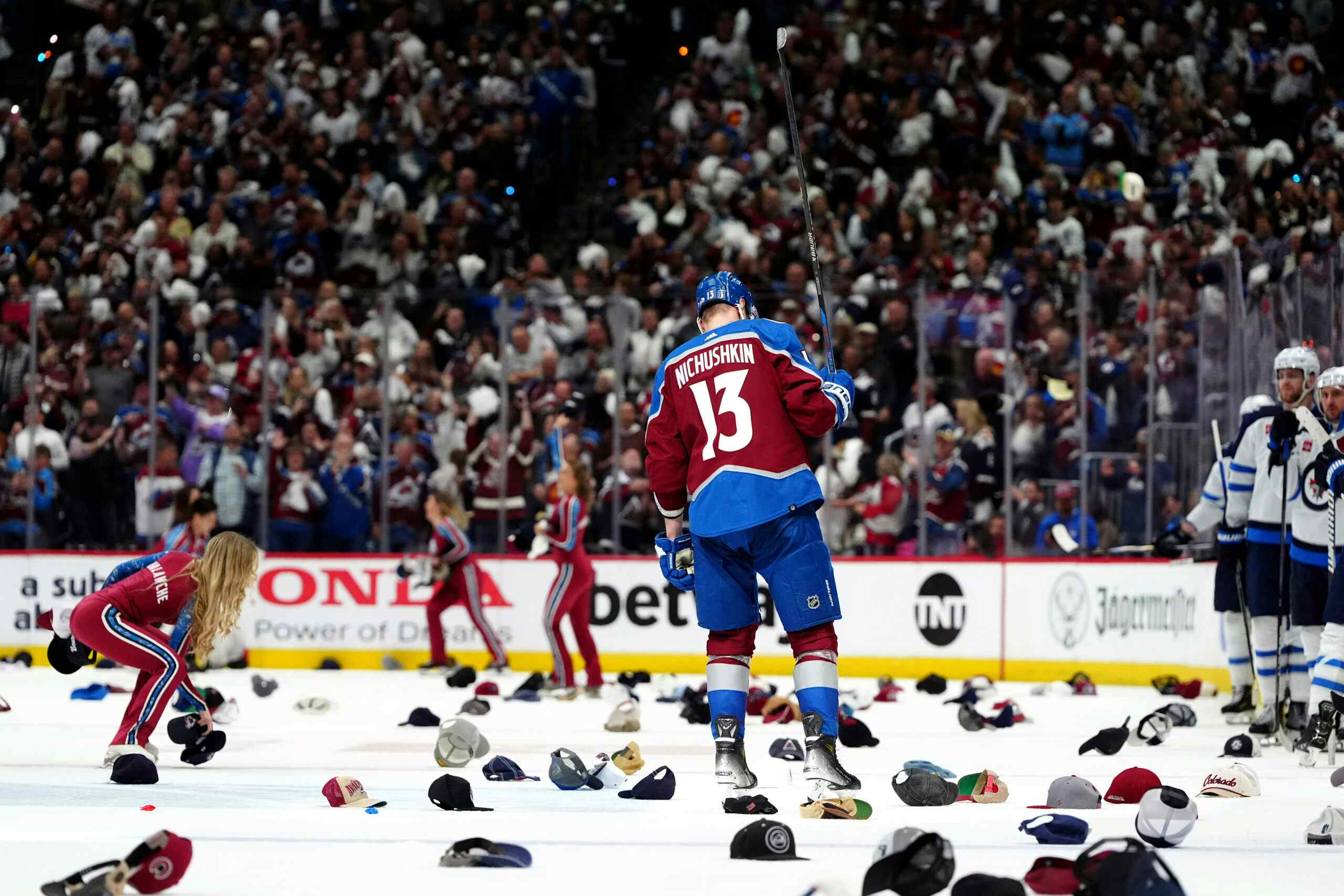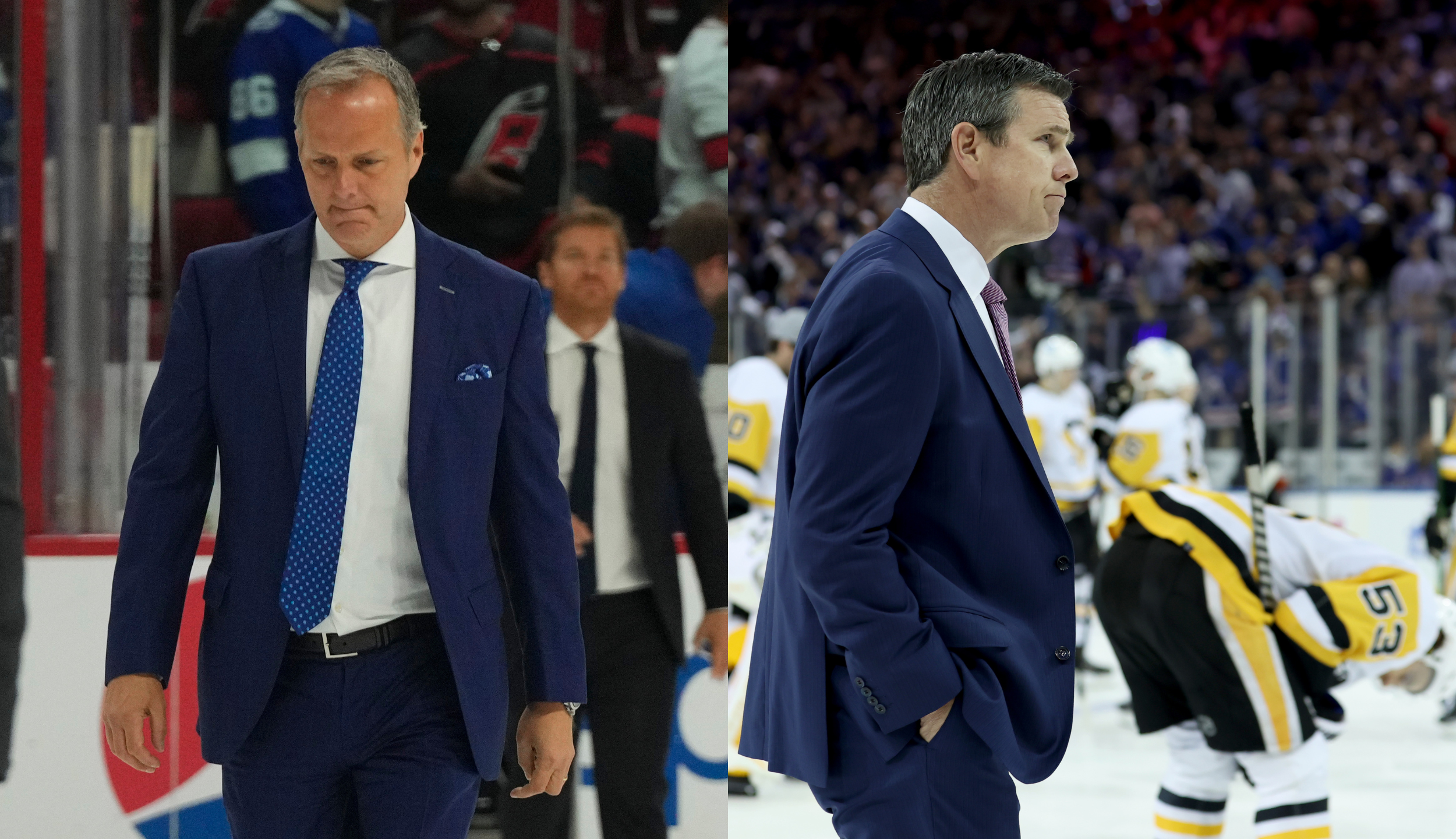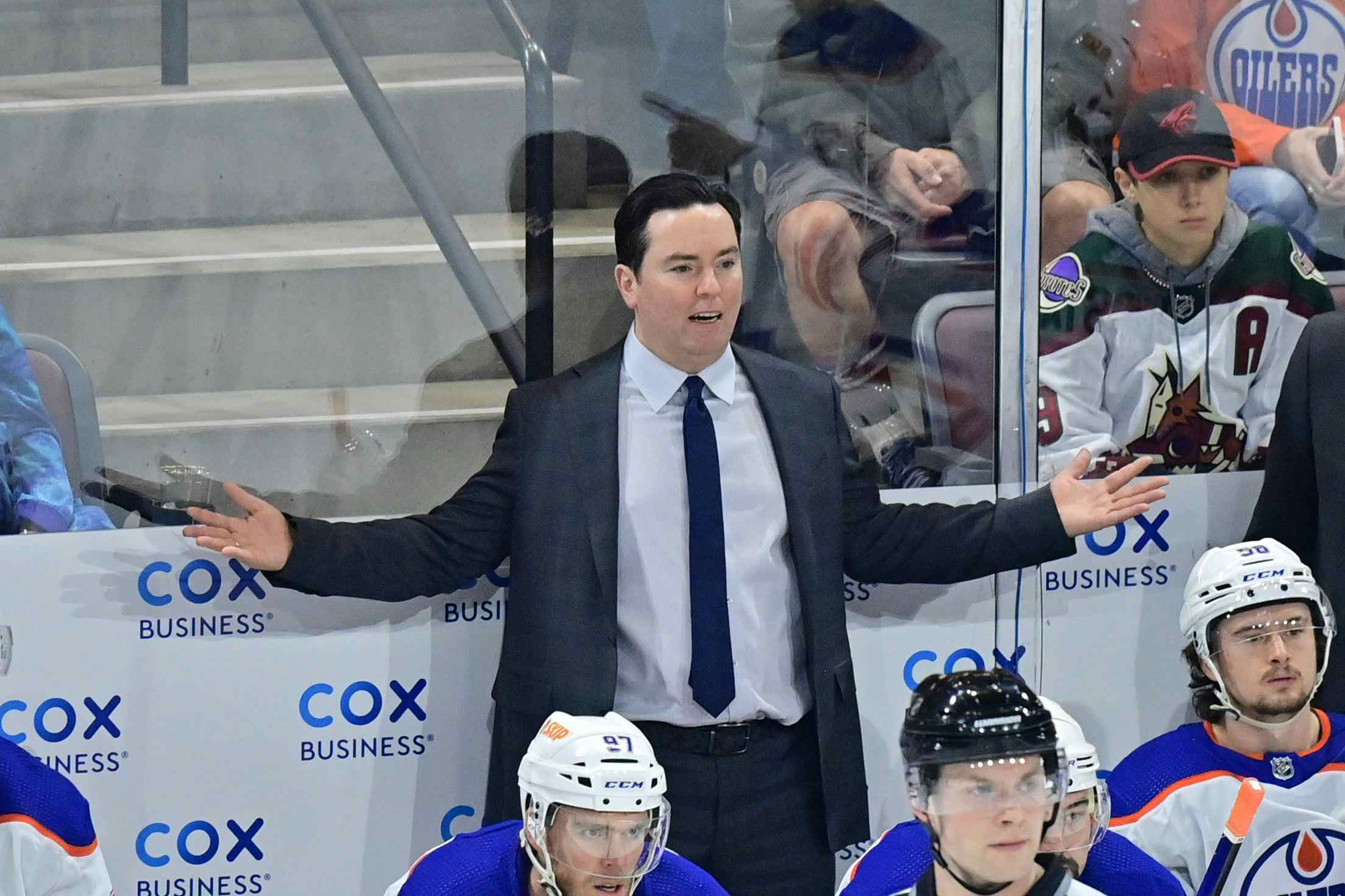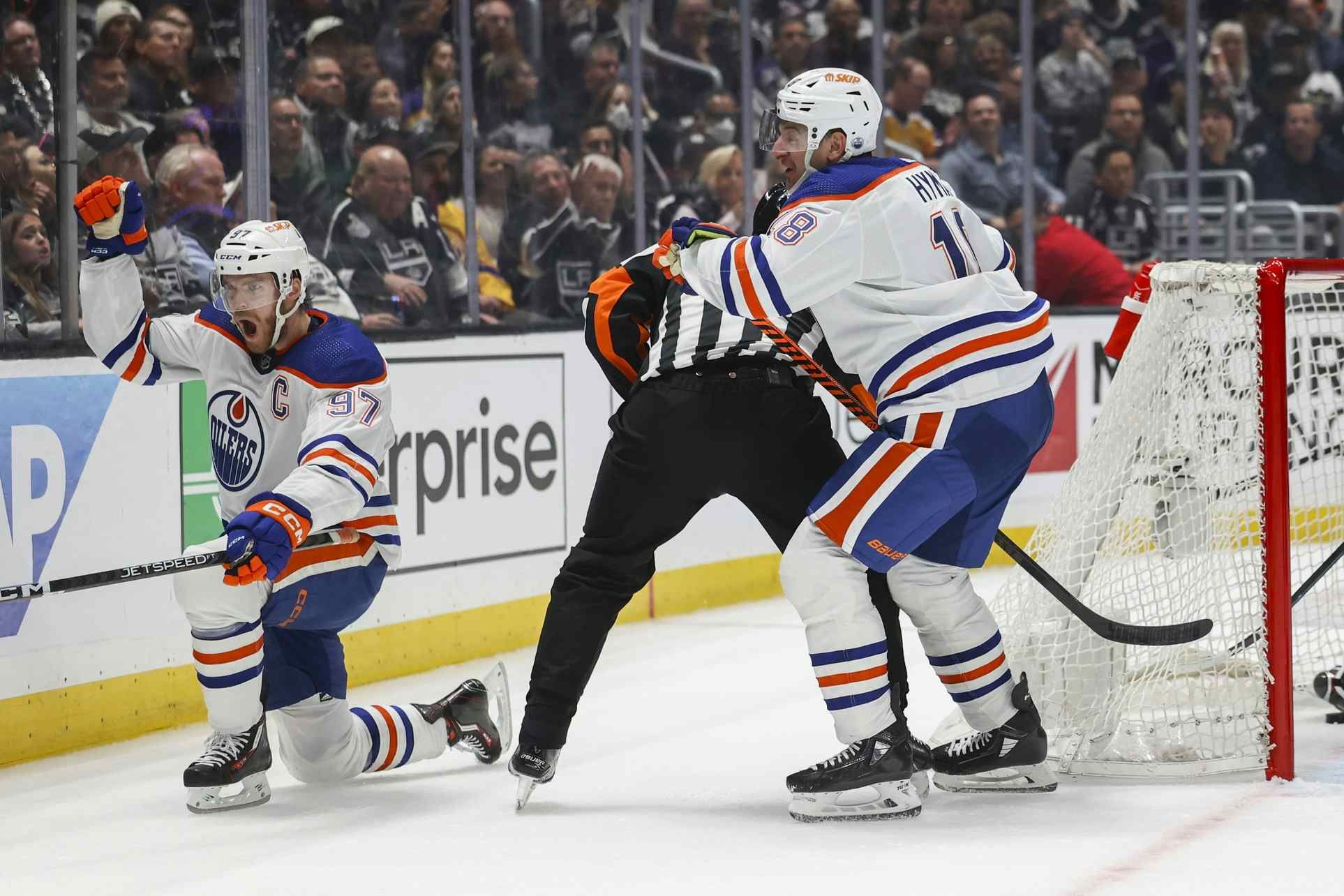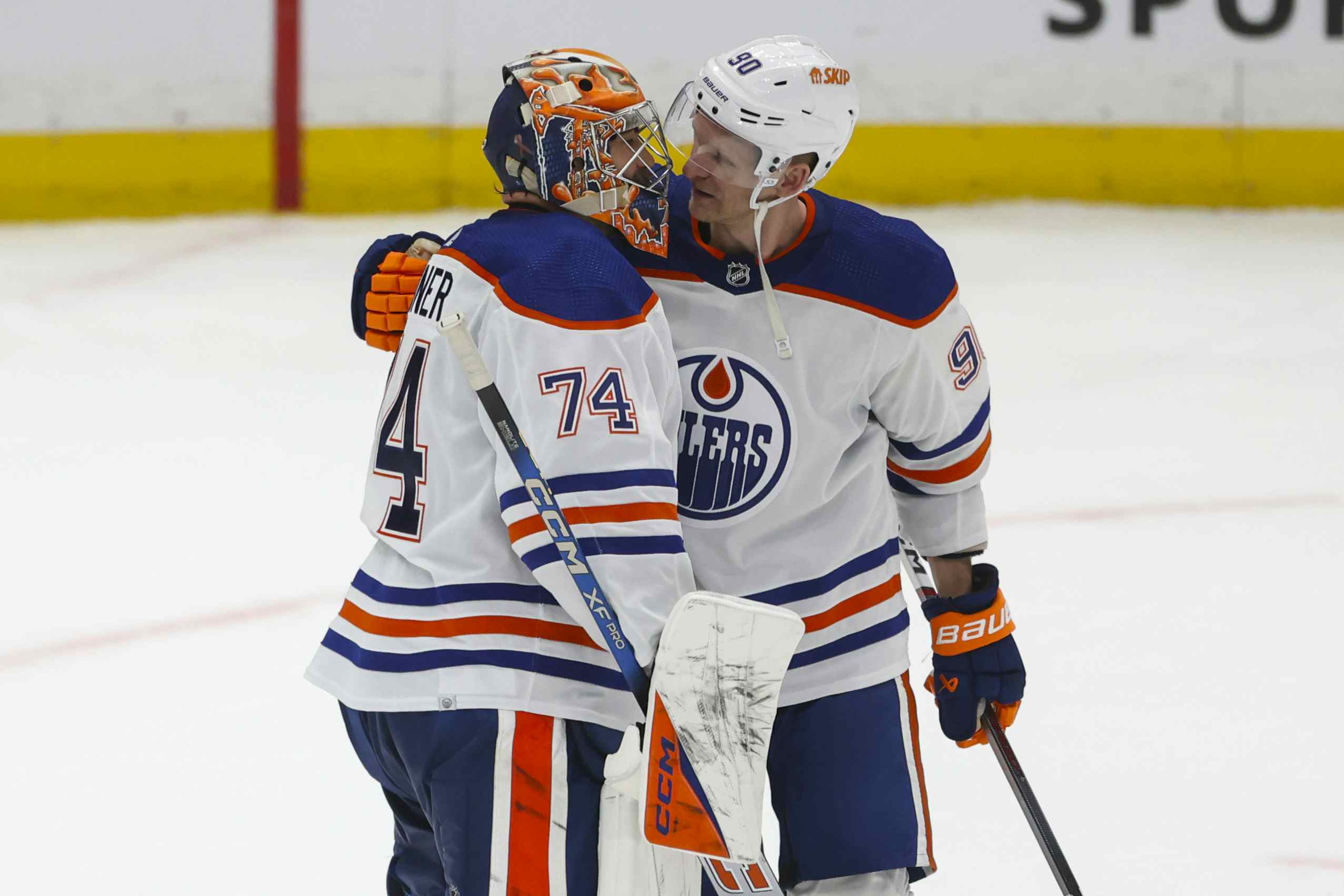The Trade That’s Really Paying off For Edmonton In 2016-17

October has been a great month for Peter Chiarelli. After a
controversial summer, his Edmonton Oilers are sitting atop the Western
Conference with a magnificent 7-2-0 record, and newcomers like Adam Larsson and
Kris Russell have been key components to that successful start.
controversial summer, his Edmonton Oilers are sitting atop the Western
Conference with a magnificent 7-2-0 record, and newcomers like Adam Larsson and
Kris Russell have been key components to that successful start.
Yet while Larsson and Russell have been important to
Edmonton’s progress this season, it’s another move of the general manager’s
that really stands out as being essential: the decision at the 2015 draft to
roll the dice on Cam Talbot as the team’s starting goaltender.
Edmonton’s progress this season, it’s another move of the general manager’s
that really stands out as being essential: the decision at the 2015 draft to
roll the dice on Cam Talbot as the team’s starting goaltender.
Acquisition

Chiarelli came to the Oilers with a reputation for astute goaltender
valuation, but most of that reputation was formed on the basis of his backup
goalies. In Boston, Tim Thomas was the incumbent starter when he got the job
and interim general manager Jeff Gorton had pulled
the trigger on the Tuukka Rask trade right before Chiarelli took over. It’s
good to find a cheap Anton Khudobin or Chad Johnson to back those players up,
but it’s a different kettle of fish than a starting goalie.
valuation, but most of that reputation was formed on the basis of his backup
goalies. In Boston, Tim Thomas was the incumbent starter when he got the job
and interim general manager Jeff Gorton had pulled
the trigger on the Tuukka Rask trade right before Chiarelli took over. It’s
good to find a cheap Anton Khudobin or Chad Johnson to back those players up,
but it’s a different kettle of fish than a starting goalie.
Edmonton had some options that year. I reviewed
a dozen of them in the days prior to the draft (and really should have
included Martin Jones on the list) and zeroed in on two in particular:
a dozen of them in the days prior to the draft (and really should have
included Martin Jones on the list) and zeroed in on two in particular:
“In Peter Chiarelli’s shoes, my Plan A would be Cam Talbot,
but I wouldn’t be willing to go above the No. 33 pick in trade. Plan B would be
Eddie Lack, but I wouldn’t give up the No. 33 to Vancouver for him; of the
Oilers current picks the No. 57 would be my upper limit (though in the event
the Oilers were to trade down from No. 33 like they did in 2013, a mid-second
round selection would be fair value in my books). Assuming neither of those
players were available for that price, any of Enroth, Greiss, Neuvirth or Ramo
(in that order) via free agency would be a somewhat reasonable outcome.”
That assessment of Talbot’s trade value was based on the
number of teams looking for goaltenders and the number of goalies available,
given that there were more candidates out there than jobs. Yet early on, that
valuation seemed overly optimistic.
number of teams looking for goaltenders and the number of goalies available,
given that there were more candidates out there than jobs. Yet early on, that
valuation seemed overly optimistic.
Jones fetched a first-round pick. Robin Lehner not only
brought a first-rounder back, but Buffalo also took on David Legwand’s overly
generous contract. Darren Dreger reported that the Rangers had turned
down a deal for two second-round picks in exchange for Talbot and that they
were “giggling”
at the richness of the return they were going to get for him.
brought a first-rounder back, but Buffalo also took on David Legwand’s overly
generous contract. Darren Dreger reported that the Rangers had turned
down a deal for two second-round picks in exchange for Talbot and that they
were “giggling”
at the richness of the return they were going to get for him.
Chiarelli, though, held firm. In the end, he was able to get
Talbot for the No. 57 and No. 79 picks, along with an almost meaningless swap
of seventh-rounders. Mileage will vary on the value of draft picks, but for my
money the whole package was worth less than the No. 33 pick alone and Edmonton
got it done even as other managers paid higher prices.
Talbot for the No. 57 and No. 79 picks, along with an almost meaningless swap
of seventh-rounders. Mileage will vary on the value of draft picks, but for my
money the whole package was worth less than the No. 33 pick alone and Edmonton
got it done even as other managers paid higher prices.
Execution

Talbot’s first year was up-and-down. He played brilliantly
in the back half of the season, but a slow start temporarily cost him the No. 1
gig, with Todd McLellan opting to play backup Anders Nilsson instead.
in the back half of the season, but a slow start temporarily cost him the No. 1
gig, with Todd McLellan opting to play backup Anders Nilsson instead.
From December on, though, Talbot was brilliant, posting a
0.930+ save percentage in three of the four months where he appeared in more
than three games. He got a new contract in January, and finished the year with
a solid 0.917 save percentage over 56 games. That number is the second-best
save percentage posted by any Oilers goalie over 20+ games since Chris
Pronger left town, trailing only Devan Dubnyk’s strong work in 2012-13.
0.930+ save percentage in three of the four months where he appeared in more
than three games. He got a new contract in January, and finished the year with
a solid 0.917 save percentage over 56 games. That number is the second-best
save percentage posted by any Oilers goalie over 20+ games since Chris
Pronger left town, trailing only Devan Dubnyk’s strong work in 2012-13.
So far this season, he’s also been the most important
non-McDavid Oiler. Talbot leads
the entire NHL in minutes played at 528; he and Marc-Andre Fleury are the only
goalies above the 500 mark. His last five games have been particularly good: he’s
allowed no more than one goal in any game during that span and has stopped 145
of 148 shots faced overall (0.980 save percentage). No wonder backup Jonas
Gustavsson has had to content himself with a mere 10 minutes of playing time.
non-McDavid Oiler. Talbot leads
the entire NHL in minutes played at 528; he and Marc-Andre Fleury are the only
goalies above the 500 mark. His last five games have been particularly good: he’s
allowed no more than one goal in any game during that span and has stopped 145
of 148 shots faced overall (0.980 save percentage). No wonder backup Jonas
Gustavsson has had to content himself with a mere 10 minutes of playing time.
Obviously, it’s still too early to declare this the new
normal, but as Darcy McLeod noted before the game against Ottawa, Talbot’s
strong numbers this season aren’t that far out of line with his career work:
normal, but as Darcy McLeod noted before the game against Ottawa, Talbot’s
strong numbers this season aren’t that far out of line with his career work:
After last season, it was entirely reasonable to think that
Chiarelli had added a capable starting goaltender for a very reasonable acquisition
and contract ($4.17
million cap hit) cost. Early this season, though, Talbot’s been a cut above
merely capable. He’s been extraordinary.
Chiarelli had added a capable starting goaltender for a very reasonable acquisition
and contract ($4.17
million cap hit) cost. Early this season, though, Talbot’s been a cut above
merely capable. He’s been extraordinary.
Recent articles from Jonathan Willis

